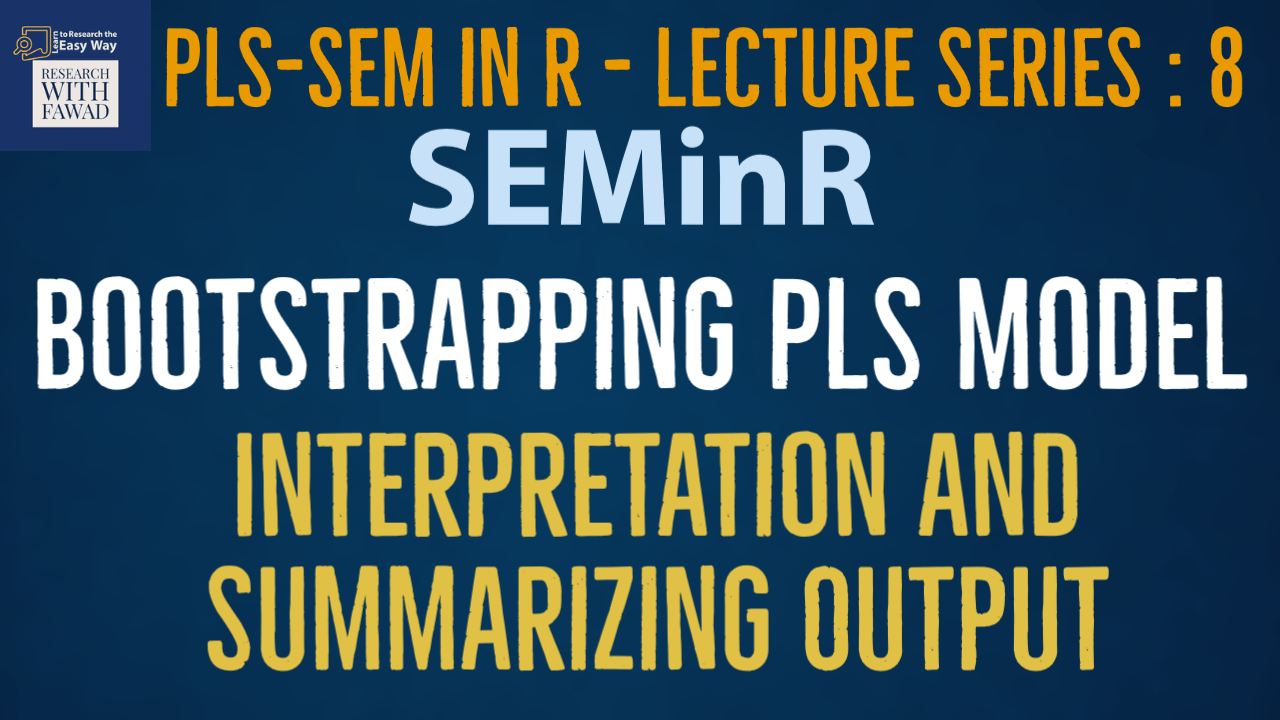
SEMinR Lecture Series
Bootstrapping PLS Model
This series of lecture on SEMinR Package will introduce the SEMinR package.

This series of lecture on SEMinR Package will introduce the SEMinR package.
There are four steps to specify and estimate a structural equation model using SEMinR:
Following is a brief review of the steps that have been discussed in SEMinR tutorials.
The next step is Plotting and Writing Results – plot() and Write.csv
Hair Jr, J. F., Hult, G. T. M., Ringle, C. M., Sarstedt, M., Danks, N. P., & Ray, S. (2021). Partial Least Squares Structural Equation Modeling (PLS-SEM) Using R: A Workbook.
The tutorials on SEMinR are based on the mentioned book. The book is open source and available for download under this link.